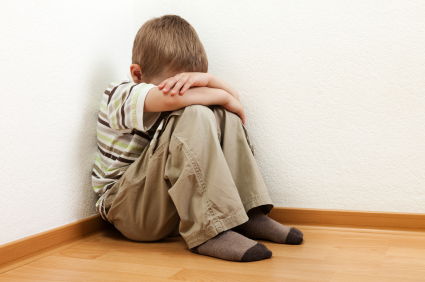
Your child is kicking and screaming and causing a scene in the middle of the grocery store, all because they can’t have a special type of cereal. This is the type of situation that most parents fear. Why is my child doing this? What can I do about it? How do I do something without looking like a bad parent or causing embarrassment for my family while everyone is staring at us?
Why kids have Temper Tantrums
Everyone has heard about the so-called Terrible Twos and the potential changes in behavior your child may have at this early age. Realistically the terrible Twos can begin as early as 15 months and last well into age 3+. One of the more frustrating behaviors kids have during the Terrible Twos is temper tantrums. But why do kids have temper tantrums? Just like adults, kids will get angry or frustrated at a situation. Kids are constantly trying to master their world, gradually learning about self-control and how to deal with their frustrations. When they aren’t able to accomplish a task or don’t get exactly what they want and/ or when then want it (kids always want instant gratification and are still learning the true art of patience), they will turn to the most basic way of venting frustration—having a tantrum.
Causes of Tantrums
There are several basic causes of tantrums that most parents are aware of: a child is seeking attention (even negative attention is attention), a child is tired, hungry or uncomfortable or upset. In addition, kids will have tantrums when they are frustrated about something—i.e. a toy they want to play with and someone else is playing with it; or a puzzle piece doesn’t seem to fit right; or wanting to have a cookie for breakfast instead of eggs).
Tantrums are most common in children 1 to 4 years of age. They are equally common in boys and girls. Since kids’ temperaments and personalities can vary dramatically, some kids will regularly have many tantrums a day and some kids may rarely have them. Children may express their frustrations in different ways—hitting, kicking, biting, screaming, pushing, or breath-holding.
Language Development
The reason temper tantrums seem to occur more at an early age is because this is during their highest point of language development. Toddlers understand a lot more at this age then they can express. They become frustrated easily when their feelings or wants are not understood. Think of it as them trying to communicate in a different language and no one is able to help them because it is not clearly understood what they want.
Autonomy
Now that toddlers are able to do more with their bodies—walk, run, jump, climb, etc. they are constantly trying to fill a need for autonomy. They want a sense of control and understanding over their environment. This sets a perfect stage for a tantrum when a child is trying to do something that they are not completely capable of doing yet—they then become frustrated and have a tantrum.
What to Do When My Child is Having a Tantrum
The best way to deal with a tantrum is try to avoid having one in the first place. Here are some tips on how to avoid tantrums:
Attention seeking
Some kids will have a tantrum because they are seeking more attention from a parent or sibling. They don’t care that it is negative attention. At their age attention is attention, and negative attention is better than no attention at all. Avoid this situation by rewarding their positive behaviors with positive reinforcement. When they are playing well with their siblings, tell them how proud you are about how they are behaving. This will promote more positive behavior in the future.
Giving Toddlers More Autonomy
By allowing children to be more involved in an activity, it can help them feel like they have more control or independence in a situation. For example, instead of asking them if they want to brush their teeth before bedtime, ask “Do you want to put on you PJ’s first or brush your teeth first?”Allowing them to have small choices like this can make all the difference in their attitude and how they respond to getting ready for bed and other situations.
Distraction
Take advantage of your toddler’s short attention span by switching to a new toy or activity if the one they are doing is forbidden or causing them frustration.
Know Your Child’s Limits
Try to not plan activities during your child’s naptime. Naps and quiet time are a necessary part of a child’s development and can help them de-stress and calm down. If you know that your toddler is getting tired or hungry, try not to squeeze in one more errand or activity. When kids are tired they can become hyper or disagreeable and have more extremes in behavior. Do your best to stick with a routine to improve their chance at a good night’s sleep.
Keep Calm
No matter the reason for the tantrum, the best thing you can do is keep your cool in the situation. Don’t complicate the situation with your own frustration—kids can sense this and it will only make the situation worse. Kids follow by example and if you are calm in the situation, this will teach them to also become calm.
Take Them Out of a Dangerous Situation
If they are in danger of hurting themselves or others during a tantrum then they should be taken to a safe, quiet place to calm down. This also applies to kids that have tantrums in public places.
Don’t Give In
It’s a different situation when a child has a tantrum when they are being refused something. In this situation, you can try ignoring the tantrum and as long as the child is not hurting themselves or others, let them get out their frustration. Do not reward the tantrum by giving in, this will only confuse a child and make them think that having a tantrum is a way to get what they want.
After the Tantrum
After your child has calmed down, it might be a good opportunity to reassure them that even though they lost control, you still love them and appreciation them ending the tantrum. It’s a great opportunity to offer empathy, “I know you were frustrated that you couldn’t have the cookie” or “I think you must have been really angry.” It’s an opportunity to teach them words to use for those feelings so that perhaps in the near future they’ll use their words instead of a tantrum to express themselves. It’s ok to tell them that “when you’re frustrated, it’s OK to be frustrated but it’s not OK to hurt people.” When they’re in a good place, you can also role play some ways to handle frustration instead of the tantrum – i.e. practice pounding or screaming into a pillow, jumping on a mini trampoline, counting to 10, retreating to a quiet place to cry if needed. We all have frustrations. As we grow, hopefully we learn better ways to handle it.
You should consult us if:
— You have questions about what you’re doing or what your child is doing.
— You’re uncomfortable with your responses or you feel out of control.
— The tantrums increase in frequency, intensity, or duration.
— Your child frequently hurts himself or herself or others.
— Your child is destructive.
— Your child displays extremes of mood such as severe negativity or extremely low self-esteem





About The Author: Dr. Christine Fyda
More posts by Dr. Christine Fyda